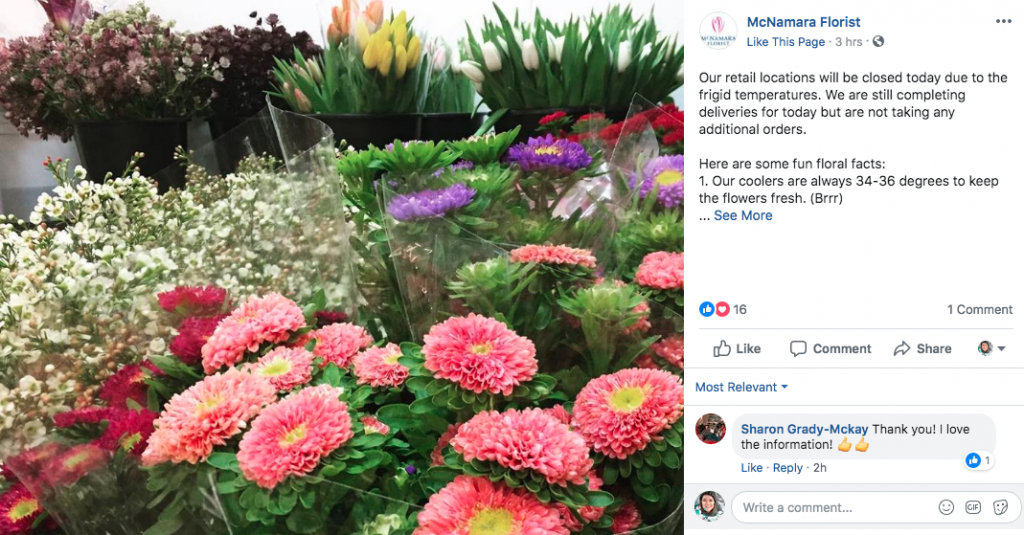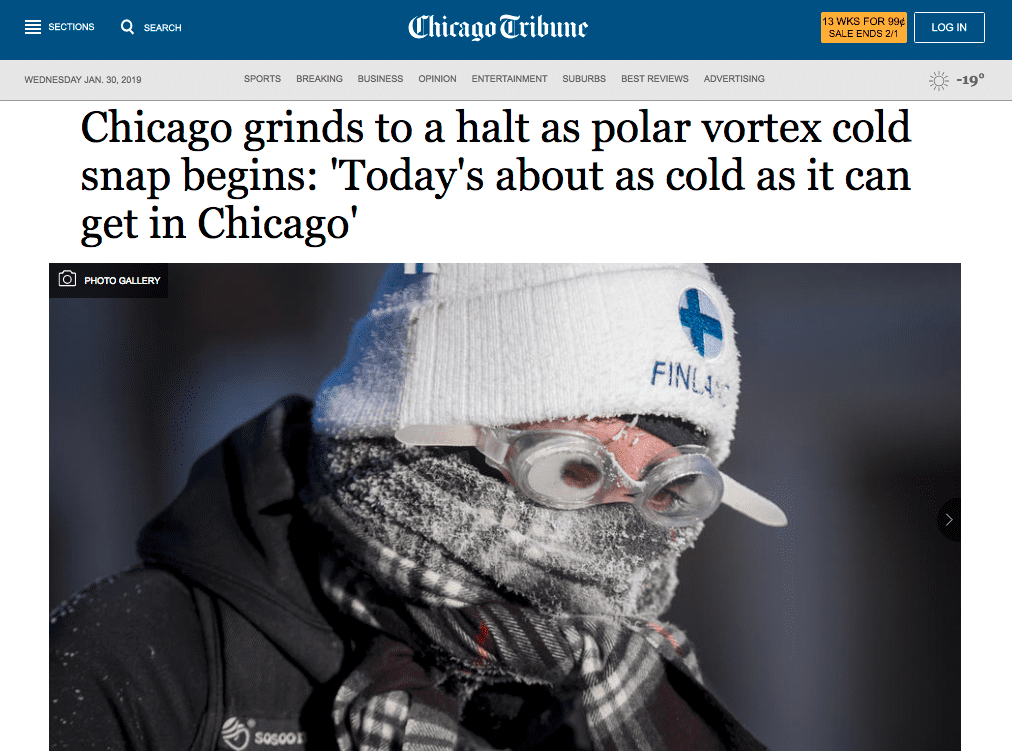
Toomie Farris, AAF, AIFD, and his team communicated their decision to close with a proactive social media post that also detailed the extra care they take in delivering flowers anytime the temperature drops below 20 F.
Some floral industry businesses in the Midwest were forced to modify operations or temporarily close their businesses on Jan. 30 in the face of bone-chilling, historic cold temperatures.
“It is turbo chilly here,” said Laura Daluga, AIFD, owner of Department of Floristry, which serves metro areas around Chicago and Detroit. “Of our four local wholesalers, one is closed entirely, two have limited hours and no delivery, the fourth is, like us, still running despite the cold.”
According to the National Weather Service, nearly 90 million people are likely to experience temperatures at or below zero this week — 25 million people will face temperatures below minus 20.
The extreme cold has created ripple effects around the country and in specific regions, with closures among schools, businesses and government offices and agencies — even the U.S. Postal Service announced it would suspend its delivery services in some areas. Transportation also has been affected: Amtrak canceled all services in and out of Chicago and thousands of flights in and out of Chicago, St. Louis and Minneapolis, among other major airports, have been grounded.

A Chicago Tribune photo gallery showed images of the city and surrounding areas, including the “frigid Chicago lakefront.”
For many floral industry business owners, the decision to close rested primarily on one important consideration: staff safety.
That was the situation at Kennicott Brothers Company in Chicago which closed facilities in Minnesota, Wisconsin, Illinois, Indiana and Michigan “because of the high risk of employees getting to and from work,” explained Marketing Manager Joe Barnes. “An accident or a car malfunction in this weather is too much to risk.”
In Indianapolis, Toomie Farris, AAF, AIFD, made a similar calculation. While McNamara Florist has a small “skeleton crew” manning its design center, “we closed retail stores today so that staff did not have to get out in extreme conditions.”
Farris and his team communicated their decision to close with a proactive social media post that also detailed the extra care they take in delivering flowers anytime the temperature drops below 20 F — a subtle but smart way of emphasizing the professionalism of the shop as a local retail florist accustomed to delivering flowers in cold weather.
“We always double wrap below 20 F degrees, but in addition, our drivers will either call or go to the door and be sure they can take the product right into a warm space before even taking the product out of the van,” he explained.
Farris said the cold will have consequences. “Business will be off dramatically due to customer demand,” he said, noting that some events have been canceled because of the weather.
Meanwhile, he added, the business is “focusing on other things and our ability to deliver product safely.”
For her part, Daluga, who is also design director for Smithers-Oasis, said that so far “order volume has been steady,” but, like Farris, she said the business has made adjustments for the cold, cold weather.
“We’ve started warming the delivery van for much longer, and parking it as close to the building as possible,” she said. “Our driver, when making residential deliveries, will go to the door first, then once they’re certain the recipient is home, she’ll head back with the flowers.”
And this week’s extreme cold has Daluga thinking about overall design and logistics challenges related to subzero weather.
“We’re having to wrap our flowers like they’re traveling into outer space,” she said. “How do you wrap a casket cover for negative 20 F weather? How about wedding bouquets? Thankfully, we don’t have , but last year, when it was subzero, we used long rolling picnic coolers to protect those perfect blooms from the cold.”
Look for more coverage of the extreme cold in upcoming issues of SAF publications.
Mary Westbrook is the editor in chief of Floral Management.



